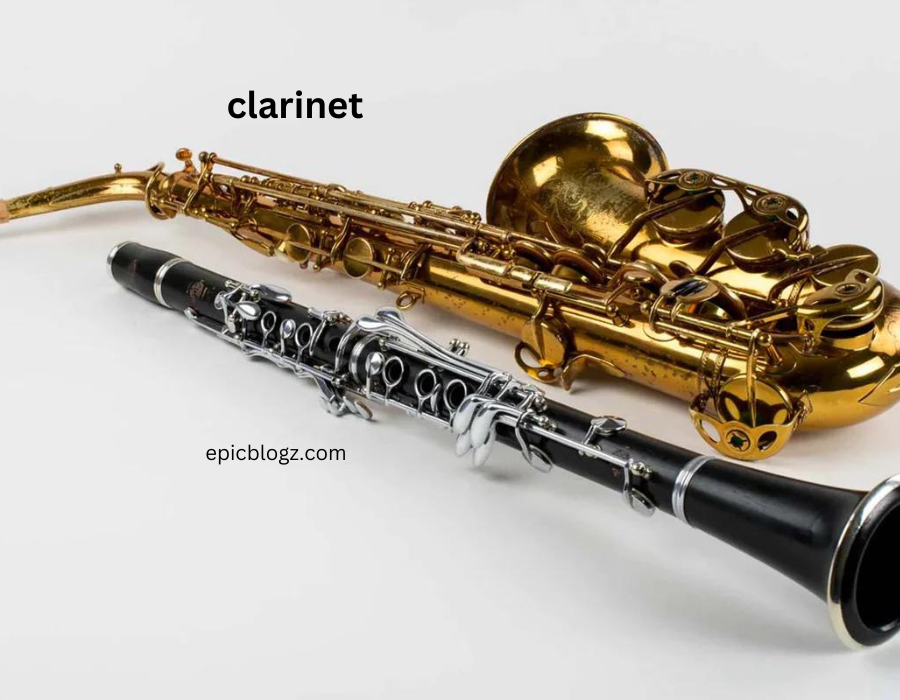Introduction
The clarinet is one of the most versatile instruments, known for its rich tone and wide range of expression. Whether you’re just starting your musical journey or you’re an experienced player aiming to refine your skills, learning and mastering the art of playing the clarinet requires dedication, proper techniques, and practice. In this guide, we’ll explore essential clarinet techniques for players at every level, from beginner to advanced, to help you improve your sound, control, and overall performance.
Playing the clarinet is an art form that combines technical precision with musical expression. The key to mastering this instrument lies in developing good habits early on, practicing regularly, and constantly working to improve your technique.
Getting Started with Clarinet: Essential Techniques for Beginners
If you’re just starting to play the clarinet, it’s important to build a strong foundation. Like any instrument, the clarinet requires an understanding of the basics before moving on to more advanced techniques. Here are the key beginner clarinet techniques that every player should focus on.
1. Proper Clarinet Posture
Good posture is essential for any wind instrument, and the clarinet is no exception. Proper posture helps you produce a better sound and reduces tension, allowing for more comfortable and effective playing.
- Sit up straight: Always sit with your back straight and shoulders relaxed. Avoid slouching or leaning back, as this can restrict your airflow and affect your tone.
- Position the clarinet correctly: Hold the clarinet at a slight angle, about 30 to 45 degrees away from your body. This allows for proper airflow and finger placement.
- Foot placement: Keep both feet flat on the floor for stability. This helps you maintain balance and posture during long practice sessions.
Developing good posture early on will make it easier to control your breath, finger movements, and embouchure as you progress in your playing.
2. Developing a Strong Embouchure
The embouchure refers to the way your lips and facial muscles interact with the mouthpiece and reed of the clarinet. A strong embouchure is critical for producing a clear, consistent sound.
- Lips and mouth position: Rest your upper teeth gently on the mouthpiece, with your lower lip curled slightly over your bottom teeth. This creates a cushion for the reed.
- Firm, but relaxed: The embouchure should be firm enough to support the mouthpiece but not so tight that it restricts the vibration of the reed. Practice finding a balance that allows for flexibility and control.
- Practice long tones: To strengthen your embouchure, practice playing long tones at different dynamics (soft and loud) while maintaining a steady, even tone.
A strong embouchure will not only improve your tone but also give you better control over your sound as you move between registers.
3. Basic Finger Positioning
Proper finger placement is essential for playing notes cleanly and efficiently. The clarinet has 17 keys, and it’s crucial to know how to position your fingers to cover the holes properly and operate the keys smoothly.
- Left-hand placement: Place your left thumb on the thumb rest at the back of the clarinet, and your fingers should cover the top three holes of the instrument.
- Right-hand placement: Position your right thumb under the thumb rest and use your right-hand fingers to cover the lower three holes.
Beginner clarinet players should spend time familiarizing themselves with these finger positions and practice scales to build muscle memory.
4. Breath Control and Air Support
One of the most critical aspects of playing the clarinet is breath control. The clarinet requires steady, controlled airflow to produce a consistent tone.
- Deep breathing: Breathe from your diaphragm, not your chest. This will allow you to take in more air and maintain better control over your sound.
- Steady airflow: The airflow should be even and steady throughout each phrase. Avoid letting the air pressure drop as you play longer notes.
As you practice, focus on using controlled breathing to sustain long notes and phrases, and work on developing your lung capacity through breathing exercises.
Intermediate Clarinet Techniques: Expanding Your Skills
Once you’ve mastered the basics, it’s time to take your playing to the next level by incorporating intermediate techniques. These techniques will help you expand your range, improve your articulation, and develop your overall musicianship.
1. Articulation and Tonguing
Articulation refers to how you start and stop notes while playing the clarinet. Tonguing is the primary technique used for articulation, and it involves lightly touching the reed with the tip of your tongue to control the sound.
- Light, precise tonguing: Use the tip of your tongue to lightly touch the reed at the start of each note. Avoid heavy tonguing, as it can create a harsh sound.
- Practice staccato and legato: Work on playing staccato (short, detached notes) and legato (smooth, connected notes) passages. This will improve your versatility and expression in your playing.
- Use a metronome: Practice articulation exercises with a metronome to improve your timing and precision.
Mastering articulation and tonguing is essential for playing more complex rhythms and adding musical expression to your performance.
2. Expanding Your Range
As you become more comfortable with the clarinet, you’ll want to expand your range by practicing higher and lower notes. The clarinet has a wide range, spanning over three octaves, and it’s important to develop control across all registers.
- Overblowing: To reach higher notes, practice overblowing by increasing your air pressure and adjusting your embouchure. This will help you transition smoothly between registers.
- Challenging exercises: Incorporate exercises that focus on the clarinet’s upper register, also known as the clarion register. These exercises will strengthen your embouchure and breath control.
- Use octave jumps: Practice jumping between octaves to improve your control over the instrument’s full range.
Expanding your range will open up new possibilities for playing more advanced music and improve your overall control of the clarinet.
3. Dynamics and Expression
Music is not just about playing the right notes—it’s about expressing emotion through dynamics and phrasing. Developing dynamic control is essential for creating an expressive performance.
- Soft playing (pianissimo): Practice playing softly while maintaining a steady tone. This requires precise breath control and a strong embouchure.
- Loud playing (fortissimo): Work on projecting your sound without sacrificing tone quality. This requires more air support and a relaxed embouchure.
- Gradual changes: Practice crescendos (gradually getting louder) and decrescendos (gradually getting softer) to improve your control over dynamic changes.
Developing your ability to play with a wide range of dynamics will allow you to bring more emotion and intensity to your performances.
Advanced Clarinet Techniques: Mastering the Art of Playing
For advanced clarinet players, the focus shifts to refining techniques, mastering challenging passages, and developing a personal style. At this level, clarinetists aim to achieve complete control over their instrument and push the boundaries of their abilities.
1. Circular Breathing
Circular breathing is an advanced technique that allows you to play long, sustained passages without pausing for breath. It’s a skill used by professional clarinetists to perform extended phrases seamlessly.
- The process: Circular breathing involves inhaling through your nose while simultaneously pushing air out of your mouth using stored air in your cheeks.
- Practice with a straw: Start by practicing circular breathing with a straw and a glass of water. Blow bubbles into the water while trying to inhale through your nose.
- Gradually apply to the clarinet: Once you’re comfortable with the technique, gradually apply it to your clarinet playing by practicing long tones and sustained phrases.
Mastering circular breathing will enhance your ability to perform demanding pieces that require continuous airflow, such as extended solos or contemporary compositions.
2. Double and Triple Tonguing
Double and triple tonguing are articulation techniques used to play fast passages with precision and clarity. These techniques are commonly used in advanced clarinet repertoire, especially in fast-moving sections.
- Double tonguing: Double tonguing involves alternating between the tip of your tongue and the middle of your tongue to articulate notes quickly. Practice saying “tuh-kuh” to develop this technique.
- Triple tonguing: Triple tonguing uses a combination of two different tonguing motions to articulate three notes in quick succession. Practice saying “tuh-tuh-kuh” to develop this skill.
Advanced tonguing techniques allow for faster, cleaner articulation in rapid passages and will improve your ability to play technically demanding music.
3. Vibrato
Vibrato is an expressive technique that adds warmth and emotion to your sound. It involves creating a slight variation in pitch, which gives your playing a more lyrical, singing quality.
- Developing vibrato: Vibrato on the clarinet is produced by varying the pressure of your air stream with small movements of the jaw or diaphragm. Start by practicing slow, controlled pitch oscillations on long notes.
- Gradually increase speed: Once you’ve mastered the basic motion, gradually increase the speed of the oscillations to produce a consistent, even vibrato.
Vibrato adds depth and character to your sound and is often used in solo performances to convey emotion and musicality.
Maintaining Your Clarinet for Optimal Performance
No matter your skill level, taking proper care of your clarinet is essential for maintaining its performance and longevity. Regular maintenance helps prevent issues such as sticky keys, air leaks, and poor tone quality.
- Cleaning: After each practice session, clean the inside of your clarinet with a swab to remove moisture and prevent build-up.
- Reed care: Rotate between several reeds to extend their lifespan, and store them in a reed case to keep them in good condition.
- Regular check-ups: Have your clarinet checked by a professional technician periodically to ensure it’s in optimal playing condition.
Taking care of your clarinet will ensure that it remains in good shape and continues to produce a clear, consistent tone.
Conclusion
Playing the clarinet is a rewarding journey that requires patience, practice, and dedication. Whether you’re a beginner learning the basics or an advanced player refining your technique, focusing on proper posture, breath control, and finger placement is essential for success. As you progress, incorporating more advanced techniques like articulation, vibrato, and circular breathing will help you unlock the full expressive potential of the instrument.
The art of playing the clarinet is not only about mastering technical skills but also about discovering your unique musical voice. By continuing to practice and explore new techniques, you’ll not only improve your playing but also deepen your connection with the music.
ALSO READ: Https://mobilehomeexteriors.com: Transform Your Mobile Home
FAQs
What is a clarinet made of?
Clarinets are typically made from wood, such as grenadilla or rosewood, although some models are made from plastic or composite materials for durability and affordability. The choice of material can affect the instrument’s tone and overall sound quality.
How do you play the clarinet?
To play the clarinet, a musician uses a single reed attached to the mouthpiece, which vibrates when air is blown through it. The player uses their fingers to cover various tone holes along the instrument’s body to produce different pitches.
What types of music can be played on the clarinet?
The clarinet is highly versatile and can be used in a wide range of musical genres, including classical, jazz, folk, and contemporary music. It is commonly featured in orchestras, chamber ensembles, and solo performances.
How do I care for my clarinet?
Proper care for a clarinet includes regular cleaning after each use, using a swab to remove moisture from the bore, and periodically checking and replacing pads and reeds as needed. Additionally, storing the instrument in a protective case helps prevent damage.
What are the different types of clarinets?
There are several types of clarinets, including the Bb clarinet (the most common), A clarinet (often used in orchestras), bass clarinet (lower range), and contrabass clarinet (even lower). Each type has its unique sound and role within ensembles.







